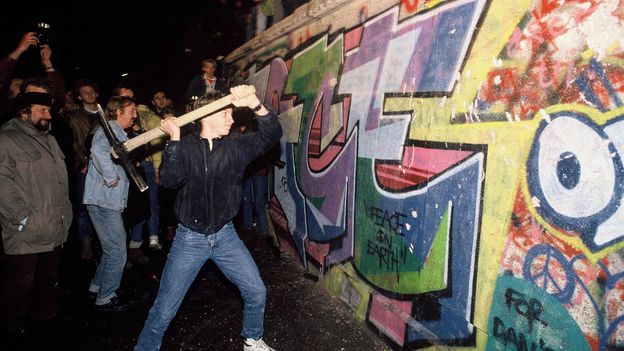For 28 years, the Wall was each a bodily and ideological barrier, dividing not simply household and buddies, however a whole nation. Berlin’s west prospered economically, fueled by funding from the US and Western Europe, whereas the town’s east struggled, stricken by shortages and repressively managed by the key police, the Stasi. The Wall turned a robust image of the Chilly Warfare, a bodily manifestation of the divide between the communist East and the capitalist West.
However within the late Eighties the complete Jap Bloc got here below strain. The Soviet Union was engaged in an intractable struggle in Afghanistan and confronted acute financial issues and main meals shortages.
In mild of this, Mikhail Gorbachev, the Soviet chief who took energy in 1985, had already initiated a sequence of political reforms, glasnost (openness) and perestroika (restructuring), however occasions spiraled past his management.
Strikes at Polish shipyards had led to mass demonstrations in Hungary and requires independence from Estonia, Latvia and Lithuania, then a part of the Soviet Union. East Germany was nonetheless firmly within the grip of the Socialist Unity Social gathering, however momentum was constructing and by November 4, 1989, half 1,000,000 residents had gathered within the Alexanderplatz public sq. in East Berlin, calling for change.

